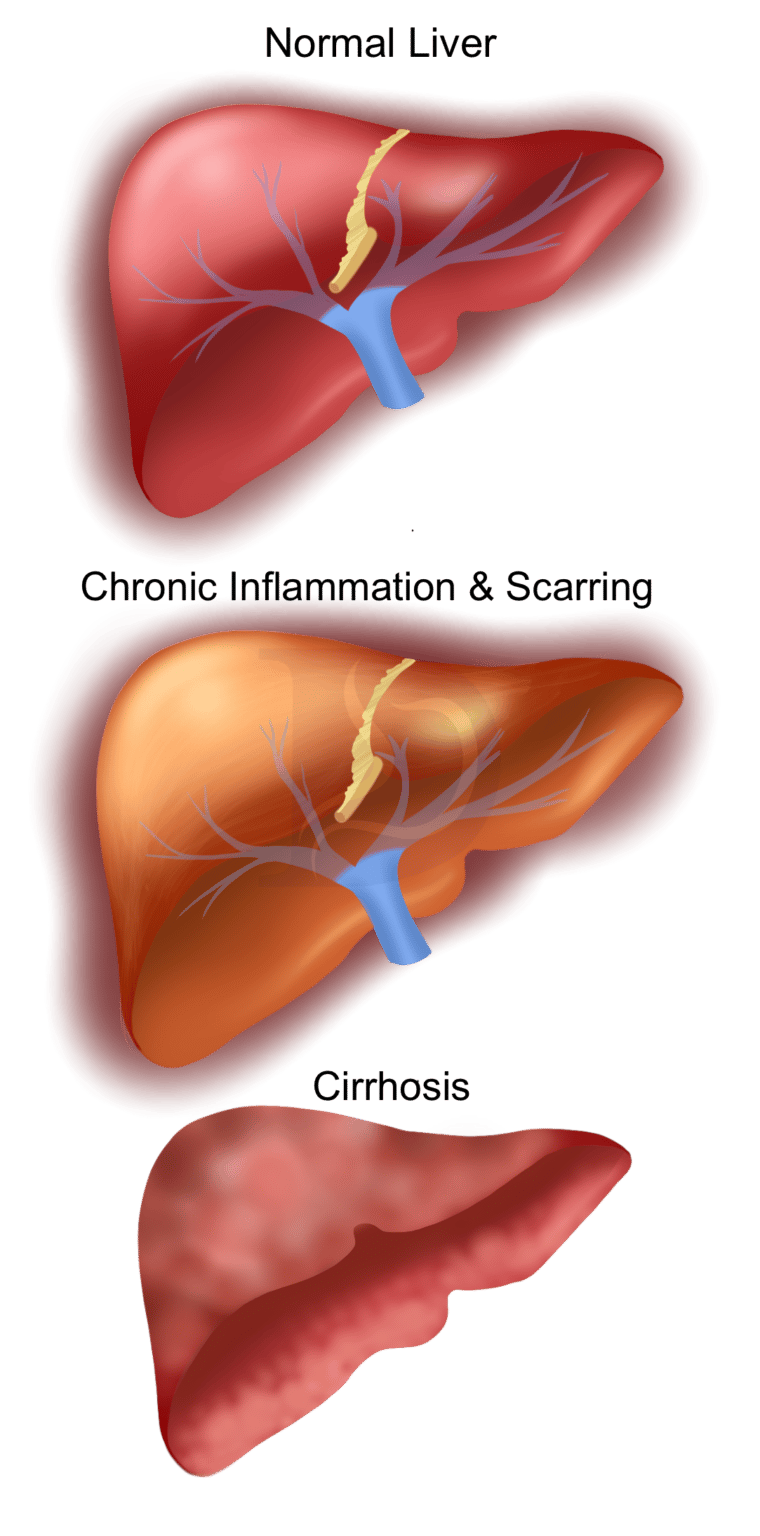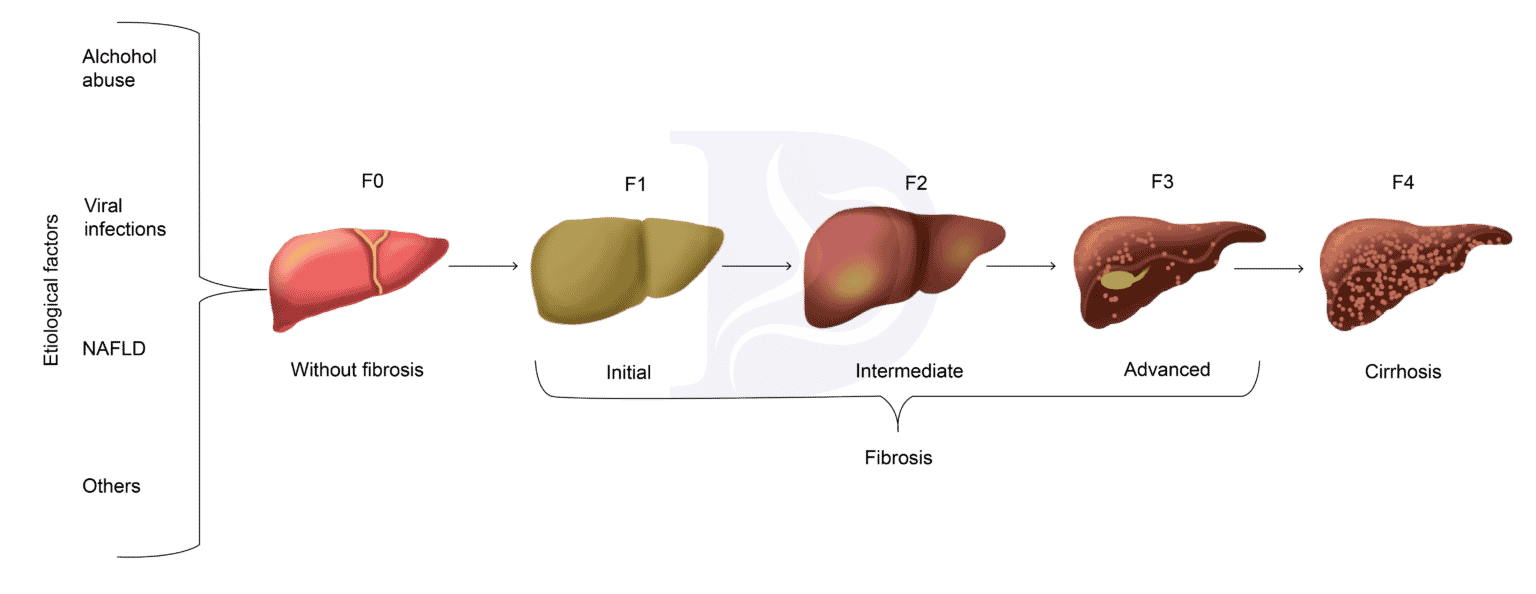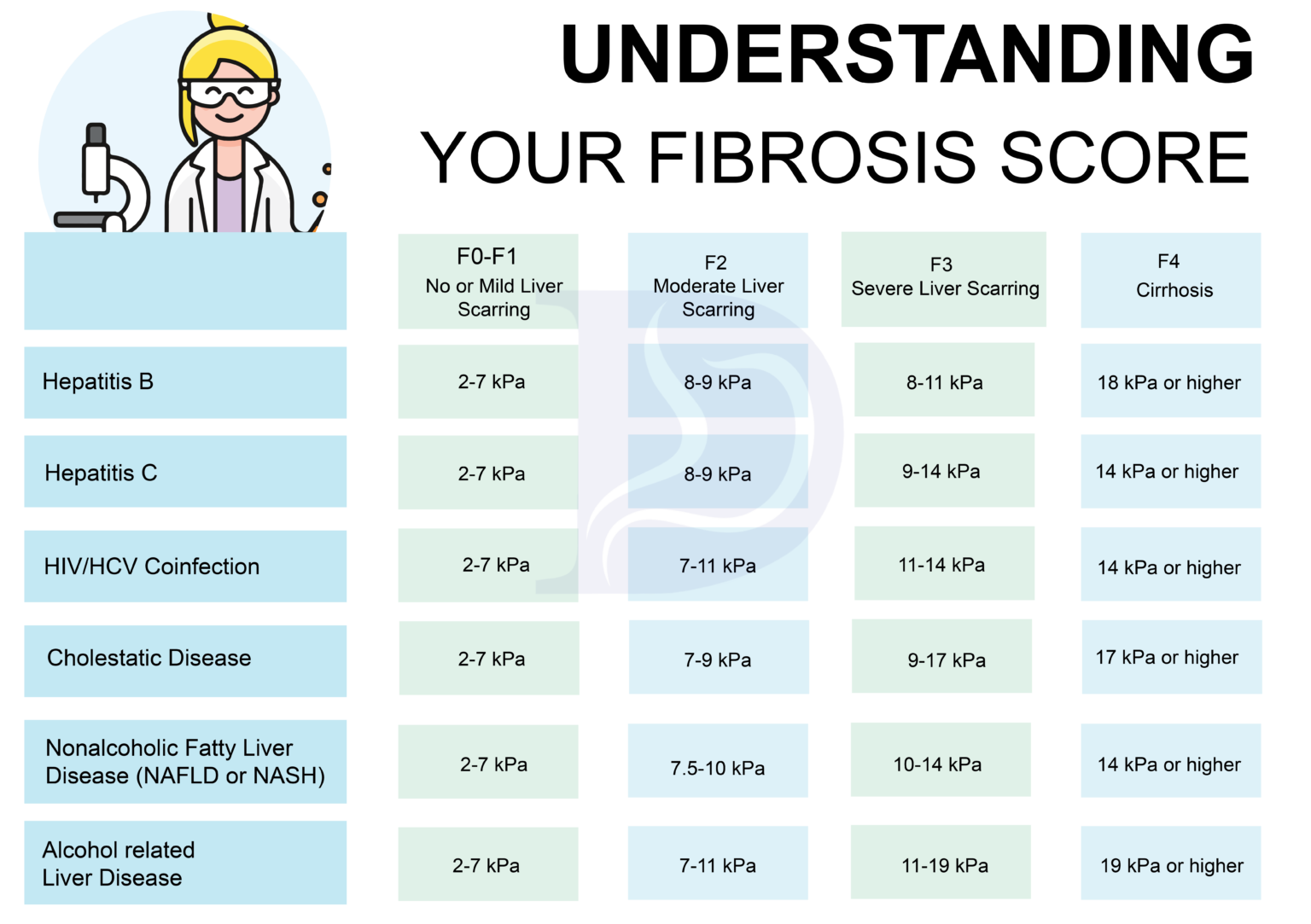The liver is a large organ with several functions crucial to life. For instance, it synthesizes and secretes bile which helps in the digestion of fats. It synthesizes and secretes clotting factors that maintain the normal clotting process. It stores vitamins and minerals and detoxifies harmful substances that enter the body. It also eliminates nitrogenous wastes from the body that would be toxic to neuronal tissues.
Due to its diversified functions, it attains a central position in the metabolic pathways in the human body.
Liver cirrhosis
When an injury occurs in any body part, scar tissue is formed. Similarly, scarring occurs when the liver is damaged due to injury or chronic disease.
In advanced stages of liver damage, liver scarring and fibrosis progress to a stage where normal functioning of the liver is severely depressed. This condition is known as liver cirrhosis, which is the end stage of chronic liver diseases(1).
Causes of liver cirrhosis
Causes of liver cirrhosis are diverse. NASH/fatty liver disease will be discussed in another section. Other causes include(3):
Alcoholism
Alcohol consumption is one of the leading causes of liver damage and cirrhosis. Alcoholism causes alcoholic fatty liver disease that progresses to liver cirrhosis and liver failure.
Chronic hepatitis
Chronic hepatitis that may be of viral or autoimmune origin, and damages the liver over time. If left untreated, the damage becomes so severe that liver cirrhosis occurs.

Bile duct blockage
Chronic bile duct blockage damages the liver and hepatocytes and can lead to liver cirrhosis. It
can occur due to factors such a gallstones or cancer.
Wilson's disease
Wilson's disease is characterized by the abnormal accumulation of copper in tissues. Excessive
copper in the liver can cause liver scarring that progresses to cirrhosis.
Hemochromatosis
Excessive blood iron levels can cause iron deposition in the liver and other body tissues. As a result, it can cause liver cirrhosis and liver failure.

Signs and symptoms of cirrhosis
Liver cirrhosis develops slowly over many years. During the early phases of cirrhosis, patients can expect some fatigue, weakness, a decreased appetite, and other mild symptoms. However, as cirrhosis progresses, and liver function becomes more severely compromised, the following signs and symptoms are reported:
Fluid accumulation
The liver synthesizes plasma proteins that hold the fluid in blood vessels. When cirrhosis develops, the levels of plasma proteins fall. As a result, fluid is drawn out from blood vessels, leading to fluid accumulation in the abdomen and legs. This can cause swelling and discomfort.
Jaundice
The liver excretes waste products of blood cell destruction into bile, which produces the characteristic color of feces. In liver cirrhosis, the excretion of waste is compromised. As a result, these wastes and toxins accumulate in the body, causing a yellowish appearance of the eyes and skin
Gallstones
Liver cirrhosis alters the enterohepatic circulation of bile, which can lead to increased development of gallstones.
Diagnosis
Your provider will diagnose liver cirrhosis on the basis of your medical history and symptoms(4). Certain blood tests, along with a Fibroscan and abdominal ultrasound will often be performed. Fibroscan is a non-invasive test that helps assess the health of your liver. Specifically, it uses ultrasound technology to determine the degree of fibrosis or scarring that may be present in your liver from various liver diseases or conditions.
A liver biopsy is required to confirm the diagnosis of cirrhosis (5).
In this technique, a sterile needle will be inserted into the right lower chest under local anesthesia, and a small sample of the liver is excised and examined under a microscope. For the convenience of our patients, all of these procedures and studies are offered at our clinic and surgical center.
Treatment
Cirrhosis is treated by tackling the underlying cause:
• Strict alcohol abstinence in cases of alcohol-based cirrhosis.
• Weight control in cases where fatty liver has progressed to cirrhosis.
• In cases involving hepatitis, treatment of the underlying cause of hepatitis can control cirrhosis.
• Edema (increased retention of fluid) in cirrhosis is managed by restricting salt intake and taking diuretics.
If none of these measures proves helpful and cirrhosis continues to progress, a liver transplant is the treatment of choice.
Summary
Liver cirrhosis occurs due to the progression of liver damage from multiple etiologies. Timely diagnosis and management can prove helpful in avoiding serious complications.
References
- Williams EJ, Iredale JP. Liver cirrhosis. Postgrad Med J. 1998 Apr;74(870):193–202.
- Ginès P, Krag A, Abraldes JG, Solà E, Fabrellas N, Kamath PS. Liver cirrhosis. Lancet. 2021
Oct 9;398(10308):1359–76. - Smith A, Baumgartner K, Bositis C. Cirrhosis: Diagnosis and Management. Am Fam
Physician. 2019 Dec 15;100(12):759–70. - Bendtsen F, Larsen FS, Ott P, Vilstrup H. [Cirrhosis of the liver]. Ugeskr Laeger. 2014 Feb
17;176(4):V02130126.


